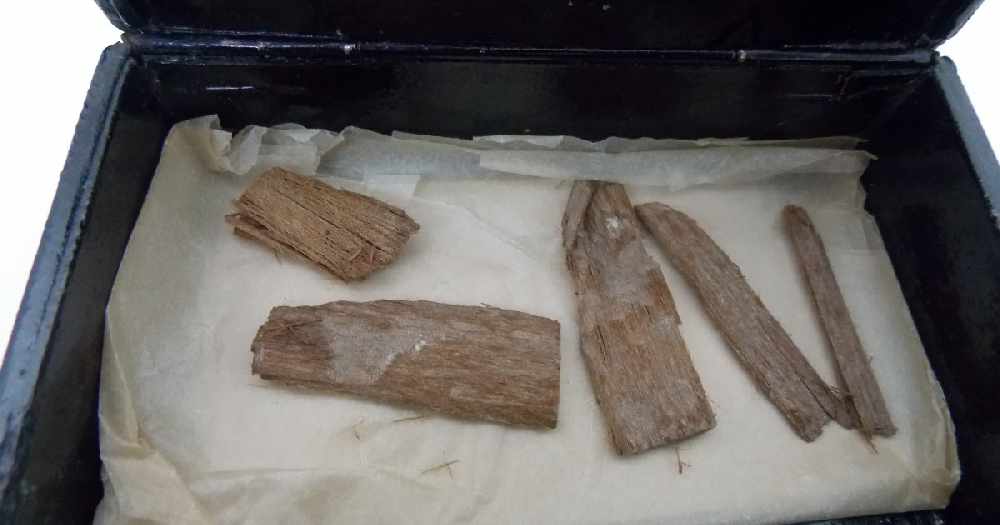
A missing 5,000-year-old artefact has been found in a cigar box at Aberdeen University.
The chance discovery, by curatorial assistant Abeer Eladany, could shed new light on the Great Pyramid, which is understood to be one of only three objects recovered from the pyramid.
Ms Eladany, who is originally from Egypt, conducted a review of the University’s Asia collection last year and noted the box had her country’s former flag on the top.
She explains what it felt like to discover the ancient piece of cedar wood: “Once I looked into the numbers in our Egypt records, I instantly knew what it was, and that it had effectively been hidden in plain sight in the wrong collection.
“I’m an archaeologist and have worked on digs in Egypt but I never imagined it would be here in north-east Scotland that I’d find something so important to the heritage of my own country.
“It may be just a small fragment of wood, which is now in several pieces, but it is hugely significant given that it is one of only three items ever to be recovered from inside the Great Pyramid.
“The University’s collections are vast – running to hundreds of thousands of items – so looking for it has been like finding a needle in a haystack.
“I couldn’t believe it when I realised what was inside this innocuous-looking cigar tin.”
The three items are known as the “Dixon Relics” after engineer Waynman Dixon discovered the items inside the Queens chamber in 1872.
Two of them - a ball and hook - are now housed in the British Museum however the third, the fragment of cedar wood, had been missing for more than a century.
Due to the pandemic the dating of the cedar wood was delayed but has now been dated somewhere in the period 3341-3094 BC – 500 years earlier than historical records date the Great Pyramid.
Neil Curtis, Head of Museums and Special Collections at the University of Aberdeen, said: “Finding the missing Dixon Relic was a surprise but the carbon dating has also been quite a revelation.
“It is even older than we had imagined. This may be because the date relates to the age of the wood, maybe from the centre of a long-lived tree.
“Alternatively, it could be because of the rarity of trees in ancient Egypt, which meant that wood was scarce, treasured and recycled or cared for over many years
“It will now be for scholars to debate its use and whether it was deliberately deposited, as happened later during the New Kingdom, when pharaohs tried to emphasise continuity with the past by having antiquities buried with them.
“This discovery will certainly reignite interest in the Dixon Relics and how they can shed light on the Great Pyramid.”


 Uber applied to launch in Aberdeen
Uber applied to launch in Aberdeen
 New scanners streamline security at Aberdeen Airport
New scanners streamline security at Aberdeen Airport
 Missing man with dad hand tattoo found
Missing man with dad hand tattoo found
 Jimmy Thelin appointed new manager of Aberdeen Football Club
Jimmy Thelin appointed new manager of Aberdeen Football Club
 12°C
12°C
 12°C
12°C